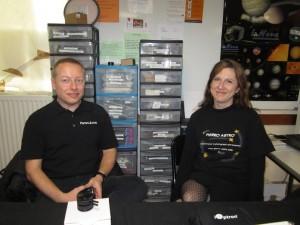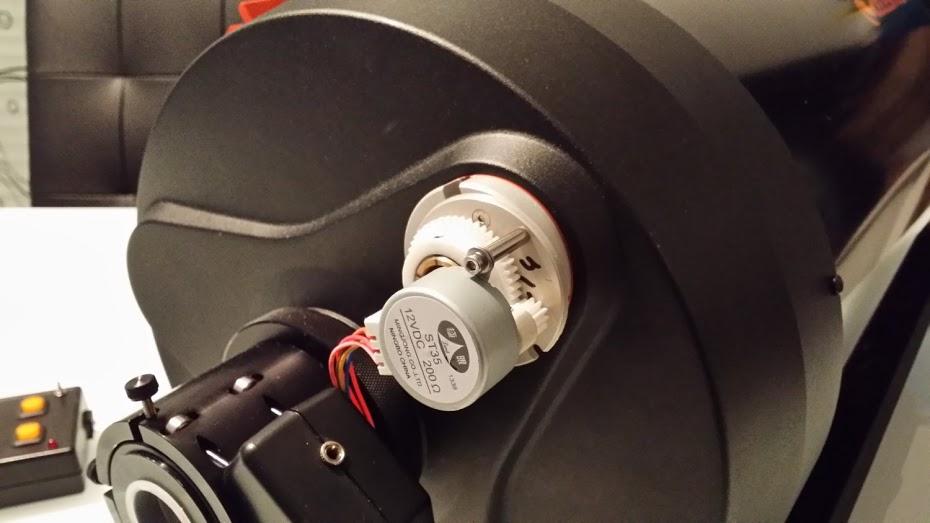 Looking to the stars is a pastime as old as humanity. While most of us no longer look to the movements of the planets and stars for answers about the future, we can all appreciate a beautiful night sky or exciting eclipse. Those of us who enjoy the stars from our backyards, or sometimes an observatory or even using really advanced telescopes that cost thousands of dollars, can benefit from suppliers of high-quality stargazing equipment.
Looking to the stars is a pastime as old as humanity. While most of us no longer look to the movements of the planets and stars for answers about the future, we can all appreciate a beautiful night sky or exciting eclipse. Those of us who enjoy the stars from our backyards, or sometimes an observatory or even using really advanced telescopes that cost thousands of dollars, can benefit from suppliers of high-quality stargazing equipment.
 Pierro Astro, a France-based company formed in 2006 to cater to amateur astronomers, creates and sells astronomical products for photography, computer tech used for astronomy, and wholly new products. The Pierro Astro team is comprised of only two people, and they personally test every single product they offer to ensure that only useful, high-quality, enjoyable-to-use products leave their shop. Their mission is to simplify astronomy, and they go about it via IT and electronic solutions — all preferably simple, accessible, functional, and low-cost… and on-demand.
Pierro Astro, a France-based company formed in 2006 to cater to amateur astronomers, creates and sells astronomical products for photography, computer tech used for astronomy, and wholly new products. The Pierro Astro team is comprised of only two people, and they personally test every single product they offer to ensure that only useful, high-quality, enjoyable-to-use products leave their shop. Their mission is to simplify astronomy, and they go about it via IT and electronic solutions — all preferably simple, accessible, functional, and low-cost… and on-demand.
In order to keep their product development up-to-date, Pierro Astro recently turned for the very first time to 3D printing. Pairing up with Sculpteo, the Pierro Astro team were quick converts:
“The first time we used additive manufacturing, we were working on a high precision focus Cassegrain reflector. The quality of the 3D printed components was perfect for our product,” said Pierre Franquet, CEO of Pierro Astro.
Pierro Astro saw the benefits of 3D printing particularly when looking at small batch requirements. The team can think up, design, prototype, and test new astronomical products in only a couple of weeks using 3D printed pieces — rather than by using traditional, subtractive manufacturing techniques that cost far more and can take several months.
 Sculpteo was the provider of choice for Pierro Astro’s needs for several reasons, 3D printing capabilities aside; their batching capabilities and material offerings proved to be ideal.
Sculpteo was the provider of choice for Pierro Astro’s needs for several reasons, 3D printing capabilities aside; their batching capabilities and material offerings proved to be ideal.
Small batches are important to Pierro Astro; some of the products are prototypes, and others are simply so specialized that it would be silly to order more than what amateur astronomers would be likely to use. Sculpteo’s Batch Control tool offers the ability to produce limited numbers of a piece at a time, as well as to open up other options. Through the Batch Control tool, users are able to select printing definition, layer thickness, and finishes. Batch Control also allows for options that can significantly reduce prices — up to 80% — when activated. That seems pretty ideal for a company interested in offering low-cost, high-quality, precision-printed products.
Sculpteo also offers the polyamide material that is best suited to Pierro Astro’s needs — which has lower-cost, higher mechanical properties, with faster production times. Its finishing options also added to the draw, as polyamide has a good surface look. Sculpteo’s polyamide is sintered together via SLS printing using their EOS Formiga P100, P110, P395, and P730 3D printers, which offer extremely high resolutions. These 3D printers offer layer precision of 100-60 μm, with the 60μm option available when Batch Control is activated.
Pierre Franquet is frank with Pierro Astro’s impression of their inaugural experience: “It’s our first try with 3D Printing, but we have many more projects to come using this revolutionary producing method.”
Discuss this story with us in the Pierro Astro 3D Printing forum thread on 3DPB.com.
Subscribe to Our Email Newsletter
Stay up-to-date on all the latest news from the 3D printing industry and receive information and offers from third party vendors.
You May Also Like
Precision at the Microscale: UK Researchers Advance Medical Devices with BMF’s 3D Printing Tech
University of Nottingham researchers are using Boston Micro Fabrication‘s (BMF) 3D printing technology to develop medical devices that improve compatibility with human tissue. Funded by a UK grant, this project...
3D Printing Webinar and Event Roundup: April 21, 2024
It’s another busy week of webinars and events, starting with Hannover Messe in Germany and continuing with Metalcasting Congress, Chinaplas, TechBlick’s Innovation Festival, and more. Stratasys continues its advanced training...
3D Printing Webinar and Event Roundup: March 17, 2024
It’s another busy week of webinars and events, including SALMED 2024 and AM Forum in Berlin. Stratasys continues its in-person training and is offering two webinars, ASTM is holding a...
3D Printed Micro Antenna is 15% Smaller and 6X Lighter
Horizon Microtechnologies has achieved success in creating a high-frequency D-Band horn antenna through micro 3D printing. However, this achievement did not rely solely on 3D printing; it involved a combination...





























